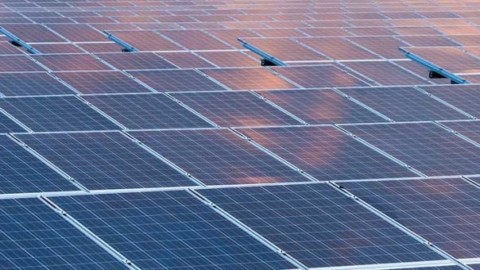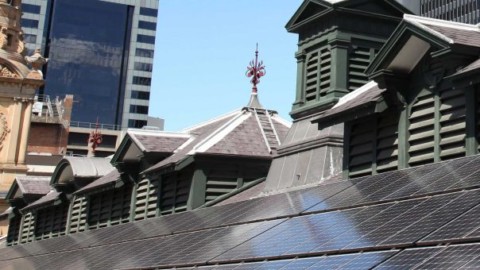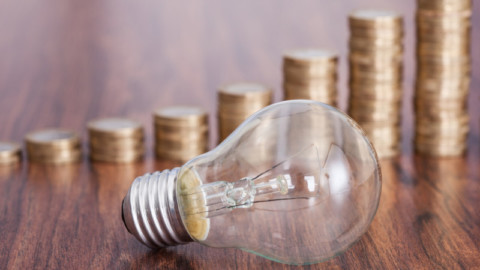By Rob Amphlett Lewis, Chief Customer Officer, Ausgrid
The challenge of decarbonisation rests on us all; industry, government, and households alike across Australia.
We all know that at a macro level, the Australian energy system needs more renewables, and more transmission to connect those renewables and move the energy from where it’s abundant, in the form of sun or wind, to where it’s needed in our towns, cities and industrial hubs.
Likewise, to make the increase in renewables possible, we need a lot more storage, to accommodate the time difference between when energy is needed, and when it is abundant.
The 2023 CSIRO Renewable Energy Storage Roadmap report predicts Australia will need six times more energy storage to support the renewable energy transition in order to reach the 2030 target.
The forecasts used by AEMO to describe the likely path of decarbonisation show similarly that huge increases in storage, throughout the system, are an inevitable part of a renewable and low carbon future.
Power of consumers
At a micro level, in homes across Australia, consumers are also electrifying their homes and vehicles, and for good reason; there is a wealth of evidence and piles of research that show electrifying a household’s assets and home goods – everything from cars to stove tops and hot water – will have positive carbon reduction and financial benefits.
Studies show a fully electrified home has an annual average running cost of $1,850, as opposed to a gas and petrol home which has an average running cost of $5,300. Over ten years, that’s a saving of $34,500 and, more importantly, a 95,550kg reduction in carbon dioxide.
So, we can be confident that consumers will continue to reduce their overall energy costs over time by increasingly electrifying their lives, and we will continue to see increasing penetration of rooftop solar, which likewise drives energy bill savings and decarbonisation benefits.
Whilst increased penetration of rooftop PV reduces carbon emissions, it also reduces system demand during the day, often creating reverse flows in the network and over-voltage conditions. The so-called ‘duck curve’, or the hollowing out of energy demand in the middle of the day, adds to the costs of solving the decarbonisation of the macro system.
This shows that without thoughtful planning and careful consideration of the whole-of-system costs to decarbonise, our efforts in different parts of the system can inadvertently make our efforts in other parts harder or more expensive. There are several implications of the changes that will happen through consumers choices around electrification and solar PV uptake:
» As homes increasingly electrify, we will see more localised network constraints and increased system peak demand driven by increased energy consumption
» Adding to this the take up of electric vehicles will add load that contributes both to localised constraints and system wide peaks
» While the additional demand will likely build on existing evening peaks, when customers come home and heat their homes, cook dinner and charge their cars; solar PV will continue to hollow out demand during the middle of the day
Micro versus macro solutions
The question we must answer is how best to design an energy system which accommodates those micro changes, while also delivering ‘macro’ system decarbonisation.
We know that one of the answers is storage, but not just how much we need, but importantly where in the system we put it, and that is because where we put it can have big impacts on how much we need, and how much it costs.
Batteries are scalable and flexible solutions. They respond faster than any other energy storage or generation technology, turning on and off in fractions of a second, helping to maintain grid stability wherever in the network they are positioned.
But batteries connected to the distribution network, both small community size and medium scale (<5MW), address the local challenges of higher peak demand and the hollowing out of system demand during the day; supporting the network during peak times and avoiding the need for network augmentation that would otherwise be necessary to address grid constraints.
They also help manage voltage and power quality, which can otherwise be challenged by the increased customer energy resources connecting to the grid. They do this while, through orchestration, also being able to provide the macro system with the support envisaged by utility-scale, high voltage transmission connected, super batteries.
Every localised network issue they address contributes to solving the macro issues associated with the intermittency of renewable generation. It really is the two birds, one stone analogy in action.
The logic of distributed storage is strong, much stronger than distributed generation, especially when coordinated and orchestrated, to smooth out time differences between supply and demand, while responding meaningfully to network challenges which would otherwise need additional investment to address.
The future of NSW storage
In New South Wales utility-scale storage is expected to grow rapidly in the next five years to around 16GWh (excl. Snowy 2.0 and long duration storage) – then from 2030 onwards, distributed individual (behind-the-meter) batteries are expected to make up the majority of the capacity, totalling almost 50GWh.
If we brought half these small batteries together and collocated them as larger shared and distributed community batteries, we estimate that New South Wales customers could save almost $20 billion (based on today’s prices) in battery costs alone. That is before we account for the additional network and system savings distributed batteries can drive.
With three – soon to be nine – community batteries across the Ausgrid network, these systems will begin to do the heavy lifting. We can expect at least 400 more battery solutions in suburbs across Australia thanks to the Federal Government’s Community Batteries for Household Solar Program.
This should just be the beginning of this trend, the Ausgrid network alone has the potential for >2 GW of battery storage capacity (distribution network connected).
Unlocking the powerful co-benefits of small to medium sized batteries is a top priority for Ausgrid and should be for networks across Australia. We are already seeing the system advantages that come from the coordination of distributed resources within the distribution network.
Ausgrid’s project Edith is currently showcasing the benefits that dynamic network tariffs, reflecting local network conditions and constraints on a five-minute basis, combined with the price signals from the National Energy Market, can deliver.
Distributed batteries have a huge role to play in driving this value, but the speed of delivery, ease of coordination, scale of response and the total cost, all improve as they get bigger.
People therefore may argue that the focus should be on installing large-scale batteries. However, once batteries get so big that they need to connect at higher voltage, or higher up in the energy system, their ability to positively impact constraints, address local challenges and reduce costs across the system quickly decline.
At Ausgrid, we are very confident in our belief that a sweet spot lies in the low voltage network and at distribution substation level, and that is what we are looking to prove through our ongoing battery program.
There will be other changes needed, including tariff and other market reform, the increased use of dynamic connections amongst others, but the financial savings, of many billions, compared to behind the meter batteries is a prize worth pursuing.
If we get this right, distributed small and medium scale battery deployment has a huge role to play in a least cost transition to a decarbonised system by delivering a more dynamic network which is actively responsive to both the energy market and its customers changing needs.




















